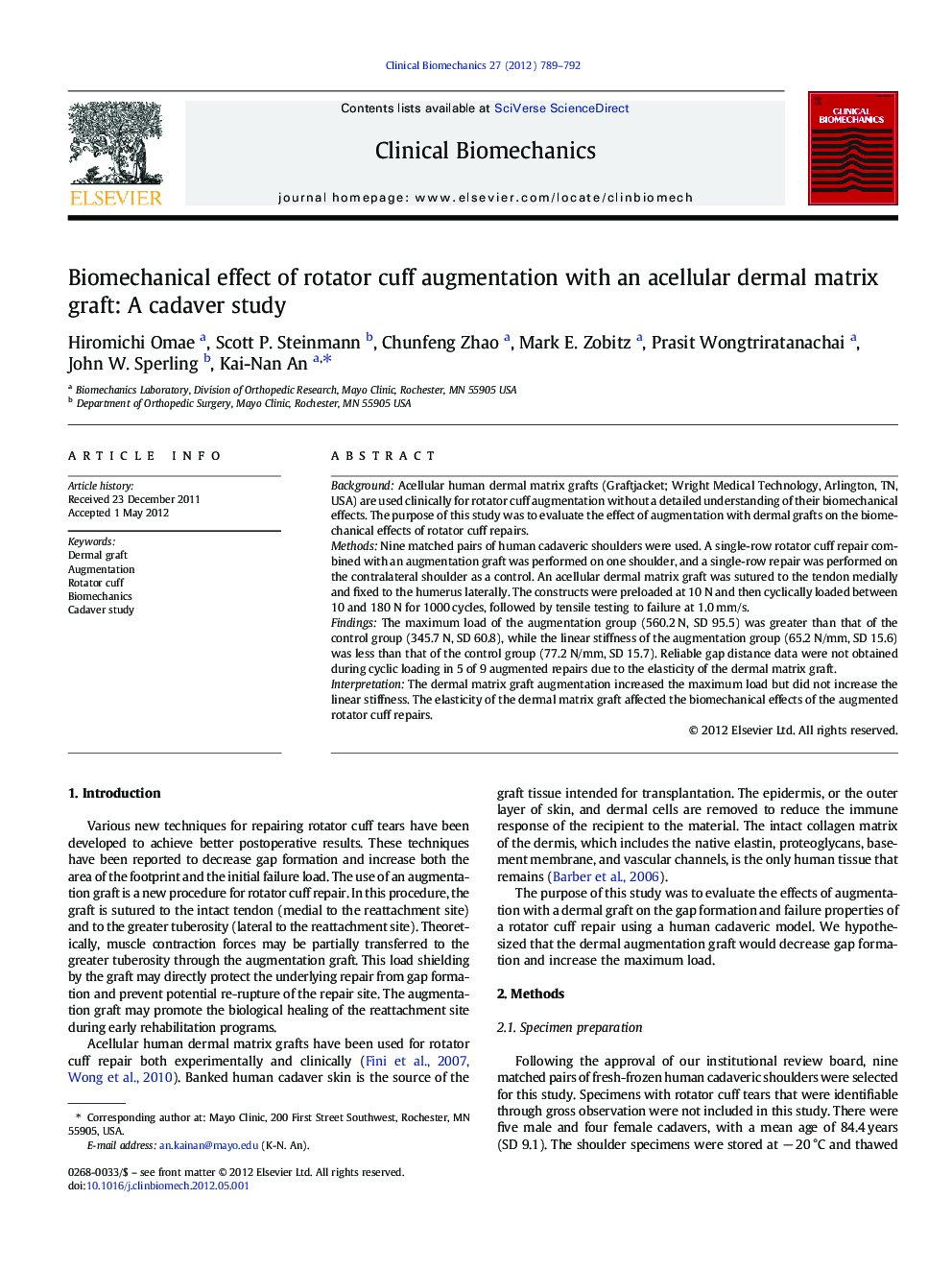| Article ID | Journal | Published Year | Pages | File Type |
|---|---|---|---|---|
| 6205155 | Clinical Biomechanics | 2012 | 4 Pages |
BackgroundAcellular human dermal matrix grafts (Graftjacket; Wright Medical Technology, Arlington, TN, USA) are used clinically for rotator cuff augmentation without a detailed understanding of their biomechanical effects. The purpose of this study was to evaluate the effect of augmentation with dermal grafts on the biomechanical effects of rotator cuff repairs.MethodsNine matched pairs of human cadaveric shoulders were used. A single-row rotator cuff repair combined with an augmentation graft was performed on one shoulder, and a single-row repair was performed on the contralateral shoulder as a control. An acellular dermal matrix graft was sutured to the tendon medially and fixed to the humerus laterally. The constructs were preloaded at 10Â N and then cyclically loaded between 10 and 180Â N for 1000Â cycles, followed by tensile testing to failure at 1.0Â mm/s.FindingsThe maximum load of the augmentation group (560.2Â N, SD 95.5) was greater than that of the control group (345.7Â N, SD 60.8), while the linear stiffness of the augmentation group (65.2Â N/mm, SD 15.6) was less than that of the control group (77.2Â N/mm, SD 15.7). Reliable gap distance data were not obtained during cyclic loading in 5 of 9 augmented repairs due to the elasticity of the dermal matrix graft.InterpretationThe dermal matrix graft augmentation increased the maximum load but did not increase the linear stiffness. The elasticity of the dermal matrix graft affected the biomechanical effects of the augmented rotator cuff repairs.
